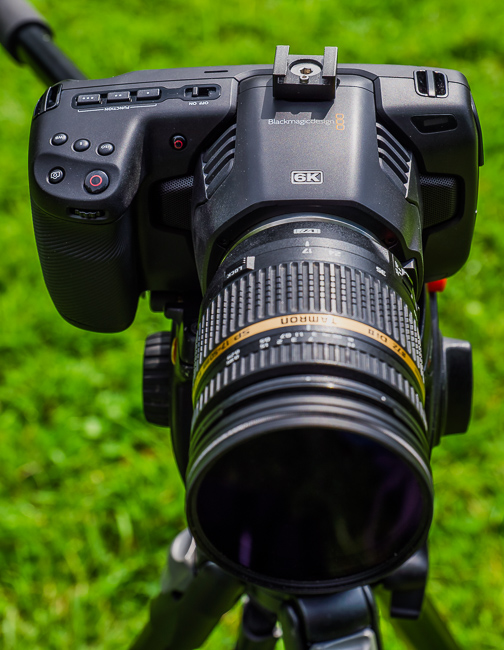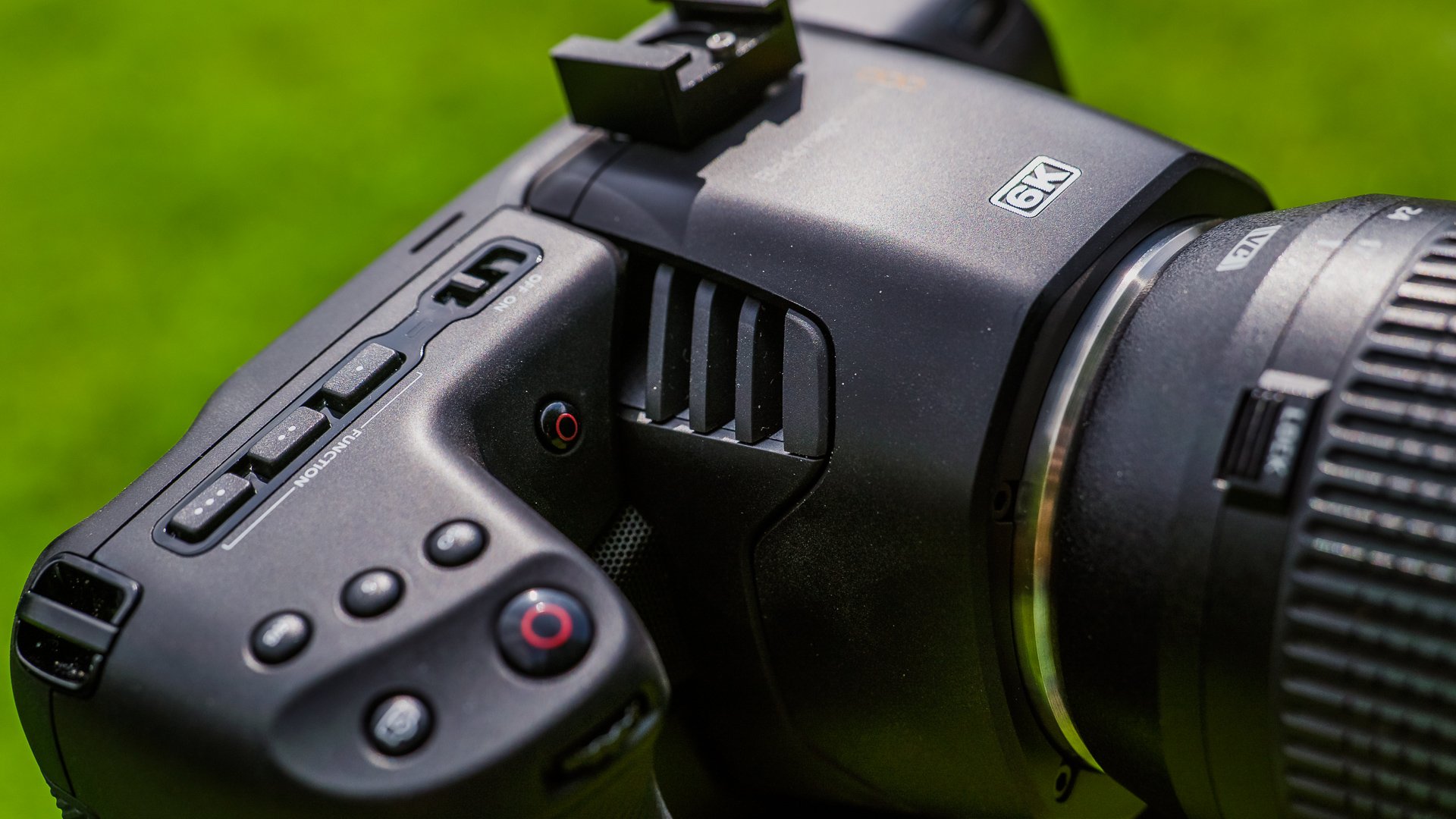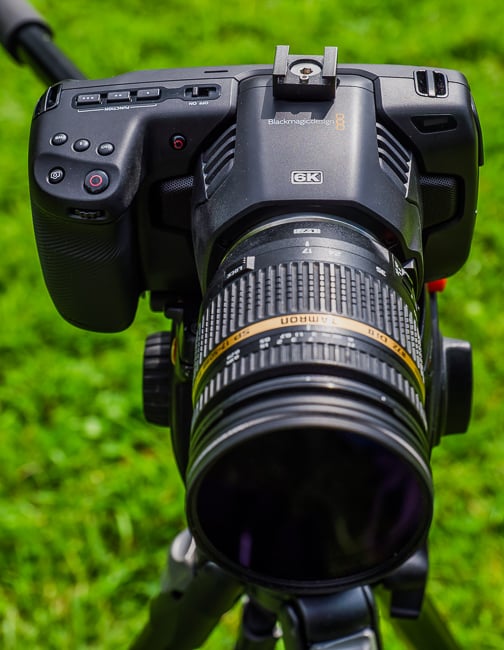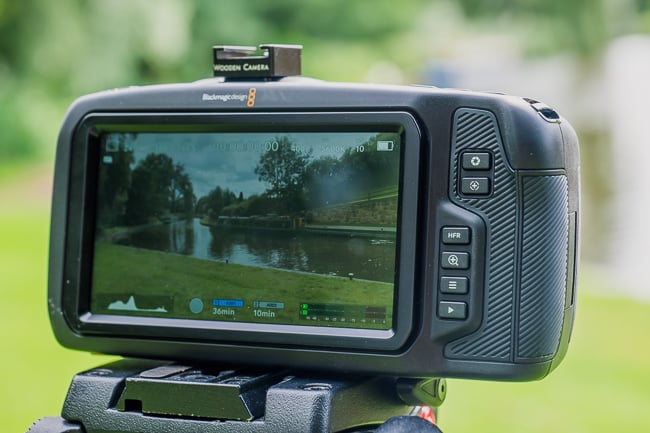

We continue our in-depth review of the Blackmagic Pocket Cinema camera with a look at picture quality, slow motion, and the all important example footage.
Read part 1 of this review here.
Picture quality
I'm not sure of the precise nature of the sensor in the Pocket 6K, but to my eye it is pretty much a perfect match to the Pocket 4K. You could quite easily use them together on a shoot with no worries about mismatching.
When you get back to the edit room it is quite apparent how much more data there is to deal with. The BMPCC 4K is an amazing camera, but the detail on the 6K is as you'd expect, sublime. It gives a useful amount of freedom to crop in and perform other effects if your final output is 4K or less. And while you have some flexibility with a 4K image in such circumstances due to the sheer amount of data, 6K really will open things up for you.
Like the Pocket 4K, the 6K is very low noise, with even ISO 25600 perfectly usable. As you can see from the video I took an ISO 25600 image taken in a high contrast situation (in a small tunnel) and then recovered the highlights using the BRAW exposure tool within Resolve. The shadows were exceptionally noise free, and the detail from outside the tunnel recovered really well. In fact it worked better than using ISO 400 to do the opposite by increasing exposure to recover the shadows.

Rolling shutter artefacts were also very well controlled. Despite a much higher pixel readout there is almost no difference in performance from the 4K. In other words rolling shutter, while still there, is no barrier to use with this camera.
For slow motion shots I pointed the camera at objects that would show resolution deficiencies such as the fine ripples on water, and trees. With the Pocket 4K you can usually see a fair few 'jaggies' at 120fps in situations where there is sharply focussed foliage for instance.
The Pocket 6K window's the sensor just like the 4K, except that you end up with a 2.8K image at its highest 120fps resolution. You can also use 120fps in ProRes HD mode, whereupon the resulting picture is downsampled from 2.8K.
The higher resolution means that there is not the same sort of artifacting as there is on the 4K at those frame rates, which clearly gives the 6K an advantage if high frame rate shooting is what you are after. It will also cut in much better if your final project output is 4K. That's not to say it's totally without artifacts, just less than you'll find with the 4K model.

Conclusions
The Pocket Cinema Camera 6K is two things. It's a highly worthwhile addition to the Blackmagic stable of cameras, but it also a partner to the BMPCC 4K. For those who have invested in the 4K model, be clear that the 6K will be better suited to some things, while the 4K will be better suited to others. In other words the 6K has not made the 4K version obsolete. At $2495 it is around twice the price of the 4K model, too. So don't fret about your camera being replaced.
If documentary and 'real life' shooting is your bread and butter then the 4K may suit you better, since you can use highly lightweight MFT lenses, as well as adapting it to use a wide variety of other mount types. The ability to record 4K BRAW is also an advantage if you want less processing and storage overhead than the new camera. The 6K will be more suited to shooting drama and other scenarios where you might want that shallow depth of field look, as well as being able to cater for the increased amount of data and processing.
Personally I do prefer the BMPCC cameras over the many mirrorless hybrids out there. No, they don't have fancy face tracking autofocus or some of the other complex features found elsewhere, and stock battery life is an issue. But I like the simplicity of the BMPCC. Its controls are focussed and straightforward, and forgetting whether you like the form factor or not, it makes a point of making shooting an exercise in creativity rather than fumbling through complex button layouts and settings. If you are primarily shooting video and want a compact system, the BMPCC should be one of your first ports of call. But remember to factor in things like the power system.
Which one would I buy? I already have 4K, but I wouldn't replace it. Instead I'd like to have a 6K alongside it as it would compliment it perfectly.
Example footage
Just a little note on the LUT I used for the footage below, which was the Natural LUT V3 by Matteo Bertoli. I'll be looking at this more closely in a separate article, but it gives an exceptionally good, neutral base that shows off the colour possible with the BMPCC without any cast. It's designed to be a starting point for the grade, but I have left it here as is, bar the odd exposure adjustment.
Tags: Production


Comments